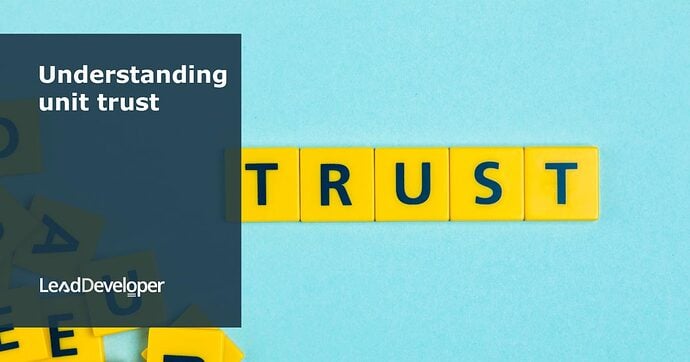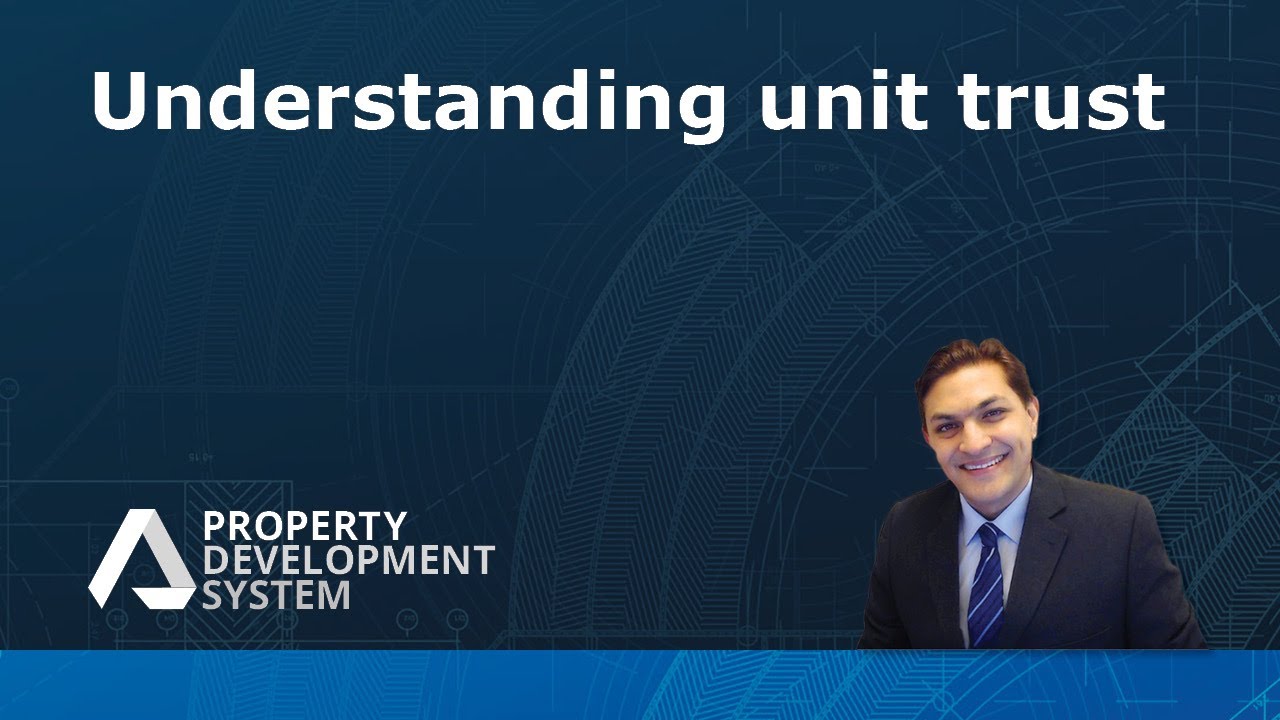Unit Trust
Here is an in-depth explanation of unit trusts, particularly in scenarios involving partnerships or joint ventures. Key points include:
Unit Trusts
Unit Trusts are best suited for scenarios with multiple stakeholders in a project, functioning similarly to family trusts but with unit holders instead of beneficiaries.
Structure
The structure is comparable to that of companies, where unit holding mirrors shareholding, with each unit representing a share in the trust.
Distribution
Distribution of profits is based on the unit shareholding within the trust.
Unit Holders’ Agreement
The Unit Holders’ Agreement outlines the actions and responsibilities of unit holders, including scenarios like exiting the trust or liquidating shares. It emphasises the need for clear arrangements to avoid jeopardizing the project.
Asset Ownership
Asset Ownership within a unit trust implies that transferring units significantly when the asset value exceeds a certain threshold may incur stamp duty.
Advice is given on consulting with accountants and specialists to set up a unit trust and draft a unit holders’ agreement to ensure a mutual understanding between all parties.
Insights based on numbers
- A unit trust structure is highlighted as beneficial for projects involving multiple stakeholders. A scenario with five different unit holders is used as an example, where their capital contribution determines their share.
- The importance of the asset value threshold (over $1 million in Victoria) indicates significant tax considerations in the transfer of units.
Frequently Asked Questions:
How does the structure of a unit trust compare to other investment vehicles?
A unit trust shares similarities with family trusts and companies but has distinctive features that make it particularly suitable for scenarios with multiple stakeholders.
In a unit trust, participants are called unit holders, akin to shareholders in a company, indicating an ownership structure that mirrors shareholding. This similarity extends to the management and distribution of profits, where the profit share corresponds to the units held by each stakeholder, comparable to dividends in a company.
The structure clearly delineates ownership and profit distribution, making it an attractive option for joint ventures or partnerships, especially compared to the more generalized beneficiary model of family trusts or the individual ownership model seen in sole proprietorships.
What are the legal implications of transferring units in a unit trust, especially in relation to stamp duty?
Transferring units in a unit trust, significantly when the asset held within the trust exceeds a certain value threshold (specifically mentioned as $1 million in Victoria), can lead to significant legal implications, including the incurrence of stamp duty.
This stipulation underscores the fact that, unlike simpler transfers of shares in a company, moving units between parties in a unit trust is subject to tax considerations, contingent on the value of the underlying asset.
The necessity to pay stamp duty on such transfers highlights the need for careful planning and legal advice when structuring investments in unit trusts, mainly to avoid unforeseen tax liabilities that could impact the financial outcomes for unit holders.
This aspect is crucial for investors to understand, as it directly affects the liquidity and cost-efficiency of holding and transferring units within a unit trust structure.
How can a unit holder’s agreement mitigate potential conflicts among stakeholders?
This agreement serves as a legal framework that outlines each unit holder’s roles, responsibilities, and rights, including procedures for scenarios such as exiting the trust or liquidating shares.
It includes provisions for first rights of refusal, ensuring that existing unit holders can buy out a departing member’s units before they are offered to external parties. This mechanism is designed to maintain stability within the trust and protect the interests of all involved parties.
The agreement helps prevent misunderstandings and disputes among unit holders by detailing actions to be taken in various circumstances—ranging from voluntary exit to financial distress. It ensures that there are pre-agreed strategies to handle changes in stakeholder participation without jeopardising the trust’s projects.
This structured approach to conflict resolution is crucial in joint ventures, providing a clear path for resolving issues that could otherwise lead to project delays, financial losses, or the dissolution of the trust.
What exactly is a unit trust?
A unit trust is an investment structure well-suited for projects with multiple stakeholders. It operates similarly to a family trust but uses unitholders instead of beneficiaries to represent an individual’s share in the project.
How is a unit trust structured?
The structure of a unit trust is similar to that of a company, where holding units in the trust is akin to holding shares in a company. Each unit represents a proportionate share of the trust’s overall value.
How are profits distributed in a unit trust?
Profits within a unit trust are distributed to unit holders based on their shareholding of units. This means that the profit each unit holder receives is directly proportional to the number of units they hold.
What does the Unit Holders’ Agreement cover?
The Unit Holders’ Agreement is a document that outlines the actions and responsibilities of the unit holders. It includes provisions for exiting the trust, liquidating shares, and other essential operations. It’s crucial to ensure precise arrangements are in place to support the project’s success.
What should be considered regarding asset ownership within a unit trust?
When transferring units within a unit trust, significantly when the asset’s value exceeds certain thresholds (e.g., over $1 million in Victoria), there may be significant tax implications, such as incurring stamp duty. It’s essential to be aware of these considerations and consult with specialists.
How should one go about setting up a unit trust?
Setting up a unit trust involves consulting with accountants and legal specialists to ensure the structure is correctly established. This includes drafting a comprehensive Unit Holders’ Agreement to ensure all parties have a mutual understanding of their responsibilities and the trust’s operations.
Why is a unit trust structure beneficial for projects with multiple stakeholders?
A unit trust structure is beneficial because it provides a clear and equitable way to distribute profits and manage the project among multiple stakeholders. For example, in a scenario with five different unit holders, each person’s capital contribution directly influences their share, allowing for a fair and transparent investment and profit distribution model.
Are there tax considerations to be aware of with unit trusts?
Yes, there are significant tax considerations, especially concerning the transfer of units when the asset’s value exceeds certain thresholds. Understanding these implications and consulting with tax specialists is important to navigate these aspects efficiently.
Test Your Knowledge
1. What is the primary function of a unit trust?
A) To provide loans to businesses
B) To act as a legal entity for holding property
C) To facilitate investment by multiple stakeholders in a project
D) To serve as a savings account with fixed interest rates
2. How does the structure of a unit trust compare to that of a company?
A) Unit trusts do not allow for profit distribution
B) Unit trusts only operate in the non-profit sector
C) In a unit trust, unit holding mirrors shareholding in a company
D) A unit trust has no structured distribution of profits
3. What determines the distribution of profits in a unit trust?
A) The number of projects completed by the trust
B) The amount of capital initially invested by each unit holder
C) The unit shareholding within the trust
D) The yearly performance of the trust’s investments
4. Which document outlines the actions and responsibilities of unit holders?
A) The Trust Deed
B) The Unit Holders’ Manual
C) The Unit Holders’ Agreement
D) The Stakeholders’ Guideline
5. What triggers stamp duty in the context of a unit trust?
A) Electing a new trustee
B) Annual profit distribution
C) Transferring units when the asset value exceeds a certain threshold
D) Changing the name of the trust
6. Why is consulting with accountants and specialists recommended when setting up a unit trust?
A) To ensure compliance with international investment standards
B) To facilitate the opening of overseas branches
C) To draft a comprehensive Unit Holders’ Agreement
D) To decide on the trust’s logo and branding
7. What example is given to illustrate the benefit of a unit trust structure for multiple stakeholders?
A) A corporation with global shareholders
B) A solo entrepreneur starting a new business
C) A scenario with five different unit holders contributing capital
D) A governmental project funded by public taxes
8. What is a significant tax consideration mentioned for unit trusts?
A) Income tax on distributed profits
B) Stamp duty on transferring units over a certain asset value
C) Sales tax on transactions within the trust
D) Corporate tax rates applied to trust profits
Answers:
- C) To facilitate investment by multiple stakeholders in a project
- C) In a unit trust, unit holding mirrors shareholding in a company
- C) The unit shareholding within the trust
- C) The Unit Holders’ Agreement
- C) Transferring units when the asset value exceeds a certain threshold
- C) To draft a comprehensive Unit Holders’ Agreement
- C) A scenario with five different unit holders contributing capital
- B) Stamp duty on transferring units over a certain asset value
Assignment
Practical Exercise on Understanding Unit Trusts
Objective:
This exercise aims to deepen your understanding of unit trusts, structure, and operation, particularly in scenarios involving multiple stakeholders, such as partnerships or joint ventures.
Instructions:
Follow the steps below, which include questions to answer, tasks to complete, and research to conduct. This practical assignment is designed to help you apply the concepts covered in the unit trust explanation.
Questions and To Do’s:
Define a Unit Trust:
Write a brief definition of a unit trust in your own words. Highlight the key characteristics that differentiate it from other investment vehicles.
Analyse the Structure:
Compare and contrast the structure of a unit trust with that of a corporation and a family trust. Create a table or chart to display the similarities and differences.
Distribution of Profits:
Describe how profits are distributed among unit holders in a unit trust. Include an example calculation for a hypothetical unit trust with four unit holders holding different percentages of units.
Draft a Unit Holders’ Agreement:
Based on your understanding, outline a simple Unit Holders’ Agreement. Include sections on roles and responsibilities, profit distribution, and procedures for exiting the trust or liquidating shares.
Asset Ownership and Stamp Duty:
Explain the significance of the asset value threshold (e.g., over $1 million in Victoria) and its implications on stamp duty when transferring units. Use a hypothetical scenario to illustrate your explanation.
Research Questions:
Legal and Tax Considerations:
Research the legal and tax considerations in setting up and operating a unit trust. Focus on the jurisdiction you are most familiar with or interested in.
Real-World Examples:
Find and summarise a real-world example of a unit trust. Describe its purpose, the stakeholders involved, and how it operates. Discuss any challenges or successes the trust has encountered.
Unit Trust vs. Mutual Funds:
Research the differences between unit trusts and mutual funds. Prepare a brief report highlighting the key distinctions, particularly regarding investment strategy, management, and accessibility for investors.
Deliverables:
- Compile your answers, findings, and the hypothetical Unit Holders’ Agreement into a report. Ensure each section is clearly labeled and well-organized.
- Include a bibliography or list of references for the research conducted.
Submission Guidelines:
- Submit your report in the specified format (e.g., PDF, Word document) through mail or comments.
- Ensure your report is self-contained, with all necessary explanations and appendices included.



